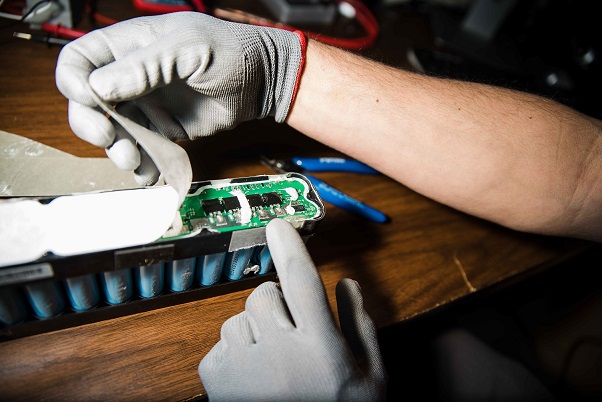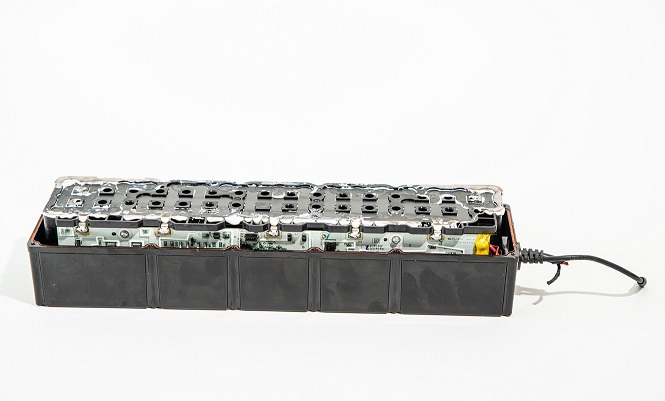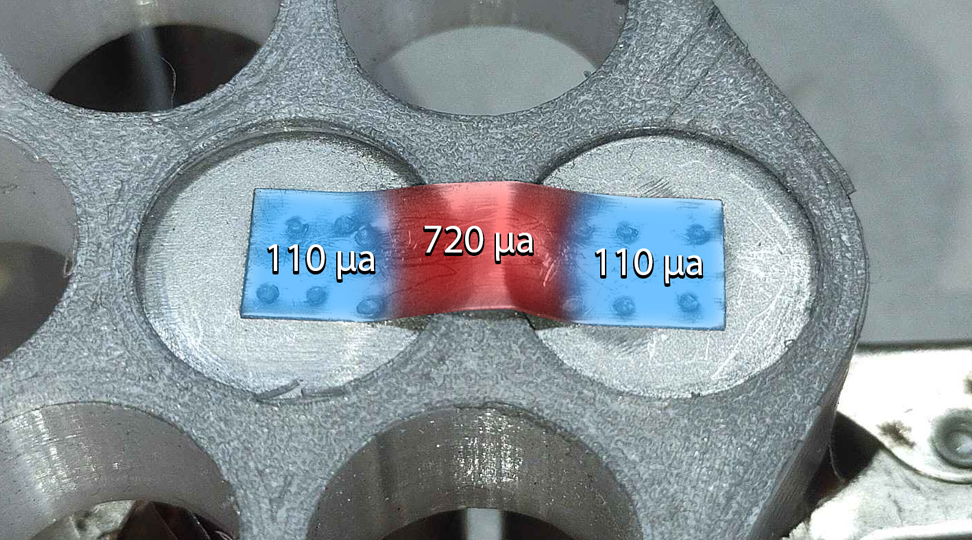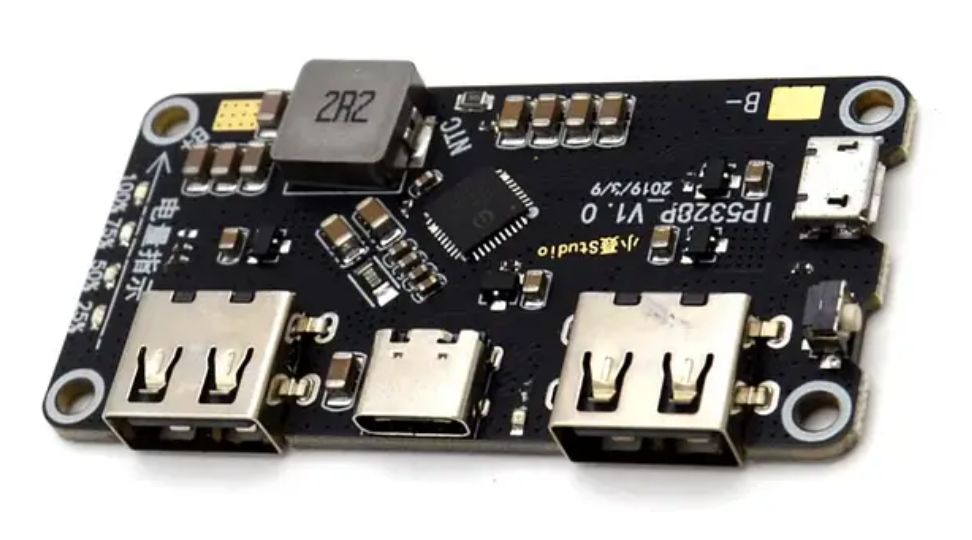
How To Identify And Fix A Broken Battery
Table of Contents
- What Causes Batteries to Break and Stop Working?
- Why Do Batteries Swell In Phones And Laptops?
- How Would I Know If My Device Has A Bad Battery?
- Is Using A Damaged Battery Dangerous?
- Can a Damaged Battery Pack Be Fixed?
- How To Repair A Drill Battery
- How To Repair An eBike Battery
- How To Prevent Damaging A Battery Pack
If you have a battery pack that is no longer working correctly, then you might want to know how to identify and fix a broken battery pack. Lithium-ion batteries are used all over the world every day to power all of our gadgets and gizmos. Whether it's your smartphone, your laptop, or in some cases, your vehicle, lithium-ion batteries are at the heart of it all. Lithium-ion batteries are great and all, but they aren't perfect. Just like any other battery technology, lithium-ion battery cells eventually break down and begin to no longer function at their specified ratings.
If you want to know how to identify and fix a broken battery, here are some general guidelines. Give the battery a visual inspection to make sure there are no burn marks or signs of leaking fluid. Use a multimeter to check the voltage of the battery to make sure it's within the expected range of the battery. Check the voltage of the battery immediately after you charge it to see if it's rapidly falling on its own. Also, feel the battery during normal operation to make sure there are no hotspots.
If the battery you are inspecting fails any of those tests, you will have to disassemble the battery down to the cell groups so that you can find out which cell group’s voltage is out of spec. If you find a bad cell group, you will have to break down the battery pack and replace the cell group with cells that match the others in the battery pack as much as possible.
In this article, we will go over how to identify and fix a broken battery pack. We will also briefly explain how and why batteries fail in the first place.
What Causes Batteries to Break and Stop Working?
So, why do lithium batteries stop working? There are several possible reasons why a battery stops working and it could even be a combination of reasons. A BMS does a really great job of protecting a battery pack but they are not perfect and there are some circumstances that render their protections useless. For example, if a battery is shorted out in the wrong area, the overcurrent protection won't be able to cut off the connection. This is unlikely, but it happens.
Below is a list of some more common ways that a lithium-ion battery can go bad.
Overcharging
If you fill a battery with more energy than it's designed to take, then you will do a small amount of permanent damage to the battery. Over time, this damage adds up and it can lead to overheating and thermal runaway.
Overcurrent
Using a lithium-ion battery beyond its sustained rated current will cause damage to the cell. Lithium-ion batteries essentially have 2 current ratings. The first rating is related to how much current a cell can provide continuously. Continuous current is pretty easy to understand because it's simply the amount of current that should not be exceeded. For example, it's easy to stay under 25 amps when you can see how much current is being used on a meter.
The second rating, which is always higher than the first one, is called the burst or max current rating. This rating is a little more difficult to understand as it involves a timeframe. Not all cell spec sheets and battery cell manufacturers rate burst current the same way.
For example, one cell may have a continuous current of 10 amps and a peak current of 25 amps with no stated time frame, leaving the user to guess. On the other hand, a different cell may have a sustained current of 10 amps and a wildly highly burst current of 40A for 100 milliseconds.
When cells are used beyond their sustained and/or burst current ratings, a small amount of irreversible damage happens every time. Over time, what seems to be working just fine can really be damaging the battery severely. So, considering the fact that it's hard to tell if you go over your peak current rating too long, the best thing you can do is plan your project so that you never go over the sustained current rating for the cells.
Over Discharging
Every time your battery falls below the voltage range that it was designed to work at, there is permanent damage done to the battery cells. This, itself, is not dangerous but it is very bad for the battery.
Charging Too Fast
If you charge your battery faster than what it is rated for, it will damage the cells and increase their internal resistance. A higher internal resistance produces more of a voltage drop which hurts performance. Also, a higher resistance makes a battery produce more heat for a given charge and discharge current.
Physical Damage
That small dent in your battery pack could be a big problem. What may seem like a superficial blemish on the outside could be a serious problem inside the cell. If a cell is dented enough (it doesn't take much) the positive and negative sides of the cell will connect.
This is not always as obvious as you may think. The overwhelming majority of dents and dings in a battery pack will only cause a minor short inside. The problem is that this minor short will manifest itself as a high level of self-discharge in that cell. That, of course, will throw the entire battery pack off balance.
Exposure To High Temperatures
If you are operating your battery packs in extreme temperatures, that places a high level of wear on the battery cells. This may not seem like something that happens that often until you realize just how hot it can get in a car with the windows up during summer.
Using a battery pack above the operating temperature that it's rated for will damage the battery over time. This will result in the battery aging much faster than it otherwise would have.
Time
Over time, a battery is charged and discharged. It’s these charge and discharge cycles that wear the battery the most. A battery pack is only good for so many cycles. Typical cobalt-based lithium-ion battery packs will last anywhere between 500 to 1200 cycles depending on the configuration and application. This usually comes out to 3 to 5 years in most use cases.
You have to consider that if time is what totally killed the bad cells in a battery pack, the same time has taken its toll on the rest of the cells as well, even if they still work. So it's ideal for a battery pack to have obvious and clear physical damage. This generally ensures that the rest of the cells are fine and still have plenty of life left in them.
Becoming Out Of Balance
When a lithium-ion battery’s series cell groups are not in perfect balance, much more stress is placed on the lower cells. This is because as a cell’s voltage is lowered, its internal resistance increases. This means that if you are running a battery with one or more low-cell groups, those low groups are aging faster than the other cells.
This situation will cause your battery to have a reduced capacity and will lead to premature failure and a loss of performance under load. It will also produce more heat within the battery, which is never a good thing. A BMS is used to help keep a battery in balance, if a BMS fails or is inadequate a pack can become out of balance over time.
Why Do Batteries Swell In Phones And Laptops?
In a lithium polymer battery, there is a polymer electrolyte inside that keeps the positive and negative sides of the battery separated. Over time and when the cell is put under heavy stresses, gasses can form inside the battery that causes it to swell.
Swelling is actually a safety mechanism as it prevents the battery from exploding. It's important to keep in mind, however, that if a lithium polymer cell is designed and used in the proper way, it won't reach the conditions required for it to begin swelling.
Canister cells do not swell, which might make you think they are more dangerous. The thing is, though, that canister cells are designed in a way which makes them not need to swell. This makes it so that canister cells not only don’t have the swelling problem but they are protected by a hard steel outer casing, making them safer overall.
How Would I Know If My Device Has A Bad Battery?
As lithium-ion cells age, the battery slowly loses its ability to maintain as high of a voltage for as long as it used to.
For example, if the battery in question belongs to an e-bike, you might notice that it takes longer to charge or that the battery rapidly loses its charge, even when you aren't using it. So, how do you identify a battery that is defective?
If you want to know how to identify a good battery from a bad battery so that you can identify and fix a broken battery, the first step is to give the battery a visual inspection. Make sure you don't see any burn marks or blackened areas. Also, check for signs of leaking fluid. Also, keep an eye out for dents. Remember, cylindrical battery cells are made of a roll of material that is tightly packed in a canister. If there is any sort of substantial dent that is visible from the outside of the cell, then that dent is more than likely causing some level of short circuit within the cell.
This will cause the cell voltage to drop and cause heat to build up within the cell. It also means that your battery will die on its own, even with no load connected to it. So if you see dented cells in a bad battery, it's kind of a good thing. It means that that’s more than likely the only problem and the rest of the cells are good. Don’t just go on looks, though. You should always use a multimeter to check the voltage of any questionable cells.
A multimeter is useful in ensuring that the voltage of a battery is within the range it's supposed to be in per the datasheet. Another good thing to do is to check the voltage of the battery directly after fully charging to make sure it doesn’t rapidly fall. Another clear indicator of a bad battery is a hot spot. If you feel the battery’s surface in various places during normal operation, you’ll be able to check for hotspots.
Is Using A Damaged Battery Dangerous?
Yes. A lithium-ion battery pack that has one or more bad cells can be extremely dangerous, especially if it's put under a heavy load. Battery packs are made from many lithium-ion cells.
So if one goes bad, it's more than likely going to negatively impact the surrounding cells. If left unchecked, a bad lithium-ion battery can overheat and go into thermal runaway, which is never a good thing.
Thermal runaway happens when anything gets so hot that it causes an irreversible exothermic reaction and it cannot cool itself enough. The reason why batteries don’t randomly explode is that they have the ability to shed built-up heat. There are, however, some cases where more heat is being generated within the cell that can be removed.
Things like overloading and overcharging a battery can lead to heat build-up that cannot be wicked away by the air. Once this reaches past a tipping point, the other cells will get hot enough to start the same process and things get out of hand very quickly.
If a battery is acting strangely then you should not use it. An undiagnosed bad battery could have one or more things wrong with it. Some types of battery damage pose no safety risk by using the battery and other problems do. The fact of the matter is until you learn how to identify and fix a broken battery, you can only guess.
Can a Damaged Battery Pack Be Fixed?
Yes. A battery pack contains many battery cells. Not all of them are going to be bad. Depending on the battery pack's construction, it can range anywhere from extremely easy to excruciatingly difficult to open the battery and remove the bad cells. As long as you can identify the bad cells and remove them from the battery pack, you will be able to repair the battery. It also may be as simple as balancing the series groups that are out of balance from the rest of the pack. It could even be as simple as the BMS went into safe mode and needs to be woken up.
How To Repair A Drill Battery
Step 1: In order to fix a broken drill battery, you’ll have to disassemble the battery pack to gain access to the cell groups.
Step 2: Examine the cells and their connections visually to make sure there are no obvious issues like leaking fluid or burn marks.
Step 3: Once you do that, you can check each cell group’s voltage to make sure they are all within range. If any of them are less than 2.5 volts or so, that group is probably bad. If you find a bad cell group, you are going to have to break the welds loose and remove those cells. It’s important to replace the bad cell or cell group with cells that are of similar capacity to the ones in the rest of the battery pack.
Step 4a: There is a chance that you can simply charge any low cell groups that you find to bring it up to balance with the others. The good news is that you don't have to break down the battery to find out. This may be all you need to do to fix a broken battery.
In a battery pack, several cell groups are welded together + to -. Because of this, it may seem like there is no way to charge one of the cell groups individually. You can, though. All you have to do is solder a wire to the positive end of the cell group and another to the negative end. You can connect these to wires to a constant current buck converter set to 4.2 volts.
Step 4b: Replace any bad cell groups with the closest possible match to the other cells. It’s important to consider the fact that the cells in the battery that you are replacing are more than likely a non-insignificant percentage into their lifespan. So, use great care when choosing what cells you use to repair the battery. The goal is for each cell group to have the same capacity and internal resistance.
Step 4B: A lot of the time the cells in a bad battery pack are just fine and the BMS is the only thing that is messed up. So, if you verify that all the cell groups are good but the battery won’t work, then the BMS more than likely needs to be replaced. Simply find a BMS that supports the number of cell groups in series that the battery you are working on has. It’s also important to make sure that whatever replacement BMS you choose is able to support the amount of current that the battery pack will need to provide in its application.
Step 7: Once you have resolved the issue, tape or wrap the battery pack to protect its internals. After that, all you have to do is put it back in the original casing.
How To Repair An eBike Battery
Fixing an ebike battery is similar to fixing a drill battery. The main difference is that an eBike battery will have many more cells and will have a higher running voltage than most drills batteries.
Step 1: To fix a broken ebike battery, you will need to take the battery pack out of its hard protective casing so that you can get to the cell groups.
Step 2: Make sure there are no cracks in the conductor and no burn marks on the cells. Also, make sure there is no liquid coming from anywhere.
Step 3: After that, use a multimeter to check each cell group’s voltage to find the bad cells. If you find a cell lower than 2.5V it is more than likely bad and if you find a cell higher than 4.2 volts, it could be dangerous.
Step 4: Replace the bad cell groups that you find with the closest possible match in terms of capacity and internal resistance.
NOTE: If you are using a really nice BMS that has active balancing, you can get away with putting healthy, fresh cells in a tired battery pack. This is because such BMS are able to correct the imbalance fast enough. There is still reduced capacity, but not nearly as much as there would be in a battery pack with a lower-end BMS. However be very careful doing this you do not want to put new cells with old cells that are too far apart in true capacity.
Step 4B: eBike batteries are generally pretty high current, so BMS failure is more common in these types of batteries. If you get lucky and see a burn mark on the BMS, then you can more than likely just replace that part and your battery will be good to go.
Step 7: Regardless of whatever you had to do to fix it, wrap the battery pack or put it back in its original enclosure if possible to keep it better protected.
How To Prevent Damaging A Battery Pack
If your battery pack is well designed and really has the specifications that it claims (this is more rare than you may think) then your battery should not suddenly go bad. Batteries have a lifespan and they fail over time. This failing, however, should be graceful and manifest itself as a gradual loss of capacity over time. A well-designed and properly used lithium-ion battery won't have cells suddenly fail and won't overheat for no reason.
If you want your battery pack to last as long as possible, then avoid extreme temperatures and high levels of heat and humidity as those things are bad electronics in general. Also, do not leave your lithium-ion powered devices and battery packs in a hot car.
Think about it. How many times have you gotten in an ultra-hot car and had to open the door, window, etc just so you can breathe for those few hot seconds. Leaving a lithium-ion battery in that condition is very bad for the battery and can cause a totally unexpected fire in the right (wrong) conditions.
Keep your cell groups in balance. Keeping a battery's cell groups in balance ensures that your battery not only works optimally but lasts as long as possible. If your cells come out of balance, the lower cells spend more time producing more heat which further degrades their health.
Always use a charger that conforms to the specifications of your battery pack. This means if you have a 36-volt lithium-ion battery that needs a 42V charge voltage, don’t attempt to charge that battery with a higher voltage battery hoping that the BMS cuts off the charge.
We put together a guide on how to get more life out of batteries, and easy-to-use tips to keep your battery healthy.
Another thing you can do to drastically extend the health of a lithium-ion battery is to never fully charge or discharge it. If you charge your battery pack to 4 volts per cell and stop using it when it reaches around 2.8 volts per cell, then your battery pack will have a lifespan that is 2 to 3 times longer while having a capacity only around 20 percent less. You can build a lithium battery charger to customize the charge current and voltage.
Conclusion
Lithium-ion batteries are used in just about every portable device you can imagine. Smartphones, laptops, vehicles, tools, and more all use lithium-ion batteries. So, if you have a battery pack or lithium-ion powered device that is no longer working, you would naturally want to know how to identify and fix a broken battery.
After a visual inspection to make sure there are no burns anywhere, check to make sure the voltage of the battery is within spec. Also, check to make sure it's holding a charge by checking its voltage with a multimeter right after you charge it. Another thing you can do is feel the battery to see if any particular spot is producing more heat than other areas of the battery pack. If after doing those things you feel like your battery might be bad, then you will have to tear it down enough to be able to measure the voltage of each cell group. Find the group or groups that have a lower voltage than the rest of the cells and remove it from the pack. After that, those cells just need to be replaced.
We hope this article helped you learn everything you needed to know about how to identify and fix a broken battery. Thanks for reading!



